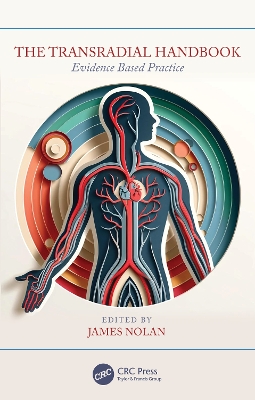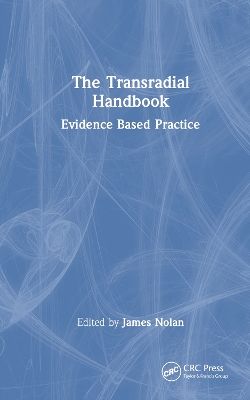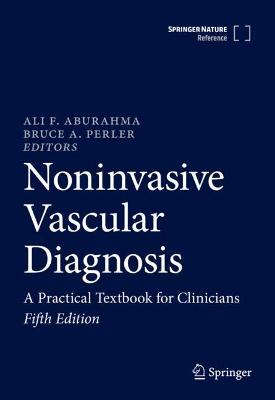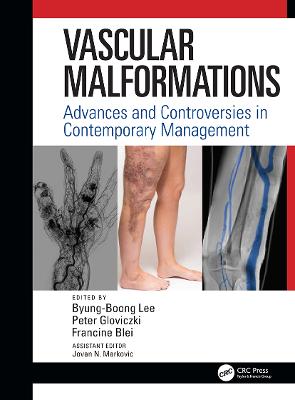Percutaneous Coronary Intervention for Chronic Total Occlusion
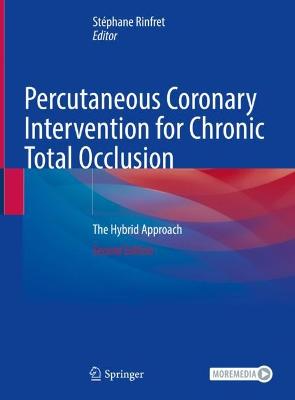 portes grátis
portes grátis
Percutaneous Coronary Intervention for Chronic Total Occlusion
The Hybrid Approach
Rinfret, Stephane
Springer International Publishing AG
11/2022
373
Dura
Inglês
9783031054365
15 a 20 dias
1320
Descrição não disponível.
1. What is what: Important Definitions in Chronic Total Occlusion Percutaneous Coronary Intervention.- 2. The Histopathology of Chronic Total Occlusion and its Impact on Mode of Treatment.- 3. Who are Best Candidates for Chronic Total Occlusion Revascularization.- 4. When, Why and How to Assess Ischemia and Viability in Patients with Chronic Total Occlusion.- 5. How to Set Up a Chronic Total Occlusion Angioplasty Program.- 6. Equipment Requirement for Chronic Total Occlusion Percutaneous Coronary Intervention.- 7. The hybrid approach and its variations for Chronic Total Occlusion Percutaneous Coronary Intervention.- 8. When, Why and How to Perform a Good Angiography Analysis Prior to CTO PCI.- 9. Specific Basic Techniques to Master in Chronic Total Occlusion Percutaneous Coronary Intervention.- 10. When, Why and How to Perform an Antegrade Approach Using a Wiring Technique.- 11. When, Why and How to Perform Wire-based antegrade Dissection and Re-entry technique. 12. When, Why and How to Perform Contemporary Device-Based Antegrade Dissection and Re-entry technique.- 13. How to Deal with Difficult Antegrade Issues.- 14. Intra-occlusion Microinjection of Contrast: When, Why and How.- 15. When, Why and How to Perform Antegrade Fenestration and Re-entry technique.- 16. When, Why and How to Perform the Retrograde Approach through Septal Collateral Channels.- 17. When, Why and How to Perform the Retrograde Approach through epicardial and non-septal collateral channels.- 18. When, Why and How to Perform the Retrograde Approach through Patent or Occluded SVGs.- 19. How to Cross the Occlusion Using a Retrograde Approach.- 20. How To Manage Ostial Chronic Right Total Occlusions and Externalization Techniques.- 21. CTO Stenting: Impact of Intraplaque and Extraplaque Strategies.- 22. When, Why and How to Recanalize In-Stent Chronic Total Occlusions.- 23. When, Why and How to Fix Common Problems Encountered in Chronic Total Occlusion Percutaneous Coronary Intervention: The Expanded Hybrid Approach.- 24. When, Why and How to Perform Subintimal Plaque Modification, Subintimal Tracking and Re-entry with Deferred Stenting for Failed Percutaneous Coronary Intervention Cases.- 25. Why IVUS when approaching a CTO?.- 26. How to Manage Calcified Chronic Total Occlusion lesions.- 27. How to Improve Catheter Support During Chronic Total Occlusion Percutaneous Coronary Intervention?.- 28. When, Why and How to Perform a Transradial Approach for Chronic Total Occlusion Percutaneous Coronary Intervention.- 30. When, Why and How to Use Left-Ventricular Assist Devices during Chronic Total Occlusion Percutaneous Coronary Intervention.- 31. Specific Considerations when Performing CTO PCI in Post CABG Patients.- 32. An Overview of Chronic Total Occlusion Percutaneous Coronary Intervention Complications.- 33. Management and Prevention of Perforations During Chronic Total Occlusion Percutaneous Coronary Intervention.- 34. How to Prevent and Manage Ischemic Complications During Chronic Total Occlusion Percutaneous Coronary Intervention.- 35. Managing Entrapped Gear During Chronic Total Occlusion Interventions.- 36. When, Why and How to Perform Robotic-Assisted Chronic Total Occlusion Percutaneous Coronary Intervention.- 37. How to Proctor New Operators to Learn Chronic Total Occlusion Percutaneous Coronary Intervention.- 38. How to Start and Build Your CTO Practice and Maintain Referrals in a Competitive Environment.
Este título pertence ao(s) assunto(s) indicados(s). Para ver outros títulos clique no assunto desejado.
Antegrade;CTO PCI;Catheter;Chronic Total Occlusion;Femoral;Percutaneous Coronary Intervention;PCI;Interventional cardiology
1. What is what: Important Definitions in Chronic Total Occlusion Percutaneous Coronary Intervention.- 2. The Histopathology of Chronic Total Occlusion and its Impact on Mode of Treatment.- 3. Who are Best Candidates for Chronic Total Occlusion Revascularization.- 4. When, Why and How to Assess Ischemia and Viability in Patients with Chronic Total Occlusion.- 5. How to Set Up a Chronic Total Occlusion Angioplasty Program.- 6. Equipment Requirement for Chronic Total Occlusion Percutaneous Coronary Intervention.- 7. The hybrid approach and its variations for Chronic Total Occlusion Percutaneous Coronary Intervention.- 8. When, Why and How to Perform a Good Angiography Analysis Prior to CTO PCI.- 9. Specific Basic Techniques to Master in Chronic Total Occlusion Percutaneous Coronary Intervention.- 10. When, Why and How to Perform an Antegrade Approach Using a Wiring Technique.- 11. When, Why and How to Perform Wire-based antegrade Dissection and Re-entry technique. 12. When, Why and How to Perform Contemporary Device-Based Antegrade Dissection and Re-entry technique.- 13. How to Deal with Difficult Antegrade Issues.- 14. Intra-occlusion Microinjection of Contrast: When, Why and How.- 15. When, Why and How to Perform Antegrade Fenestration and Re-entry technique.- 16. When, Why and How to Perform the Retrograde Approach through Septal Collateral Channels.- 17. When, Why and How to Perform the Retrograde Approach through epicardial and non-septal collateral channels.- 18. When, Why and How to Perform the Retrograde Approach through Patent or Occluded SVGs.- 19. How to Cross the Occlusion Using a Retrograde Approach.- 20. How To Manage Ostial Chronic Right Total Occlusions and Externalization Techniques.- 21. CTO Stenting: Impact of Intraplaque and Extraplaque Strategies.- 22. When, Why and How to Recanalize In-Stent Chronic Total Occlusions.- 23. When, Why and How to Fix Common Problems Encountered in Chronic Total Occlusion Percutaneous Coronary Intervention: The Expanded Hybrid Approach.- 24. When, Why and How to Perform Subintimal Plaque Modification, Subintimal Tracking and Re-entry with Deferred Stenting for Failed Percutaneous Coronary Intervention Cases.- 25. Why IVUS when approaching a CTO?.- 26. How to Manage Calcified Chronic Total Occlusion lesions.- 27. How to Improve Catheter Support During Chronic Total Occlusion Percutaneous Coronary Intervention?.- 28. When, Why and How to Perform a Transradial Approach for Chronic Total Occlusion Percutaneous Coronary Intervention.- 30. When, Why and How to Use Left-Ventricular Assist Devices during Chronic Total Occlusion Percutaneous Coronary Intervention.- 31. Specific Considerations when Performing CTO PCI in Post CABG Patients.- 32. An Overview of Chronic Total Occlusion Percutaneous Coronary Intervention Complications.- 33. Management and Prevention of Perforations During Chronic Total Occlusion Percutaneous Coronary Intervention.- 34. How to Prevent and Manage Ischemic Complications During Chronic Total Occlusion Percutaneous Coronary Intervention.- 35. Managing Entrapped Gear During Chronic Total Occlusion Interventions.- 36. When, Why and How to Perform Robotic-Assisted Chronic Total Occlusion Percutaneous Coronary Intervention.- 37. How to Proctor New Operators to Learn Chronic Total Occlusion Percutaneous Coronary Intervention.- 38. How to Start and Build Your CTO Practice and Maintain Referrals in a Competitive Environment.
Este título pertence ao(s) assunto(s) indicados(s). Para ver outros títulos clique no assunto desejado.


